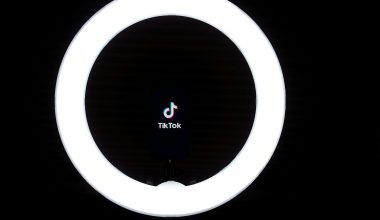Why Your Vocal Mic Matters in Home Recording
When it comes to home recording, your microphone is the star of the show. The right vocal mic can make your voice sound crisp, clear, and professional, while the wrong one can turn your masterpiece into a muddled mess. Whether you’re a budding musician, a podcaster, or just exploring the world of home audio, finding the perfect mic is crucial. And don’t worry—choosing the right mic doesn’t have to be complicated. In this blog, we’ll break it all down into simple, actionable steps to help you pick the best home recording vocal mic.
Understanding the Different Types of Vocal Mics
One of the first steps in finding the right mic is understanding the different types available. Not all mics are created equal, and each one serves a unique purpose. Let’s explore the main types you’ll encounter.
1. Dynamic Microphones
Dynamic microphones are rugged and versatile. They’re great for live performances and can handle high sound pressure levels (SPL) without distorting. However, for home recording, they might not capture the finer details of your voice as well as other types. Popular models include the Shure SM58 and the Sennheiser e835.
2. Condenser Microphones
Condenser mics are the go-to choice for most home recording enthusiasts. They’re highly sensitive, making them perfect for capturing vocal nuances. If you’re after that polished, studio-quality sound, a condenser mic is a fantastic choice. Some favorites in this category include the Audio-Technica AT2020 and the Rode NT1-A.
3. Ribbon Microphones
Ribbon mics offer a warm, vintage sound that many professionals adore. They’re delicate and require careful handling, but the results can be stunning. However, they might not be the best option for beginners due to their fragility and cost.
Key Features to Look for in a Vocal Mic
Once you’ve decided on the type of mic, it’s time to consider the features that matter most for home recording.
1. Polar Patterns
The polar pattern determines how the mic picks up sound. Cardioid mics, for instance, focus on sound directly in front of them and reject noise from the sides and rear. This makes them ideal for solo recording in untreated rooms. Other patterns, like omnidirectional and figure-8, have their uses but might not be as practical for most home setups.
2. Frequency Response
Pay attention to the mic’s frequency response range. A good vocal mic will enhance mid-range frequencies where the human voice shines while avoiding an overly bright or muddy sound.
3. Connectivity
Decide between USB and XLR microphones. USB mics are plug-and-play, perfect for beginners. XLR mics, on the other hand, require an audio interface but offer greater flexibility and superior sound quality.
Setting Up Your Home Recording Space
Now that you have a better idea of what mic to choose, let’s talk about where you’ll use it. Your recording environment plays a massive role in how your mic performs.
1. Acoustic Treatment
Even the best mic can’t fix a bad room. Invest in some basic acoustic treatment to reduce echo and background noise. Foam panels, bass traps, and a good rug can make a world of difference.
2. Positioning Your Mic
Placement is everything. Position the mic at mouth level and maintain a consistent distance (about 6–12 inches). Use a pop filter to prevent harsh plosives from ruining your takes.
3. Managing Background Noise
Eliminate as much noise as possible. Turn off fans, close windows, and record during quiet times of the day. A little effort here goes a long way in improving your recordings.
Top Recommendations for Home Recording Mics
To make your search easier, here’s a list of tried-and-true vocal mics for home recording:
1. Audio-Technica AT2020
Affordable and reliable, this condenser mic delivers excellent sound quality and works well in most home studios.
2. Rode NT1-A
Known for its incredibly low self-noise, the NT1-A captures vocals with amazing clarity and warmth.
3. Shure SM7B
A favorite among podcasters and singers alike, the SM7B excels in isolating vocals and delivering rich, smooth tones.
4. Blue Yeti USB Microphone
For those new to home recording, the Blue Yeti is a versatile USB mic that’s easy to use and produces great results.
Getting the Most Out of Your Vocal Mic
Choosing the right mic is just the beginning. To truly make the most of your home recording setup, follow these tips:
1. Learn Basic Mic Techniques
Experiment with mic distance and angles to find the sweet spot for your voice. Slight adjustments can significantly impact the final sound.
2. Use an Audio Interface
If you’re using an XLR mic, pair it with a quality audio interface. This device ensures clean audio conversion and often includes preamps to boost your mic signal.
3. Edit and Enhance Your Recordings
After recording, spend some time editing your vocals. Software like Audacity or GarageBand can help you clean up noise, add effects, and polish your tracks.
Troubleshooting Common Issues
Even with the best vocal mic, you might run into challenges. Here are some quick fixes for common problems:
1. Vocal Distortion
If your recordings sound distorted, check your input levels. Lowering the gain on your audio interface can often solve this issue.
2. Background Noise
If noise persists, consider upgrading your acoustic treatment or using a noise gate during post-production.
3. Inconsistent Volume
Practice consistent mic technique, or use compression during mixing to even out volume levels.
Wrapping Up: Home recording vocal mic
A great vocal mic is an investment in your sound, and with the right choice, your home recordings can rival professional studios. Whether you’re just starting or looking to upgrade your gear, take your time to explore options and experiment with your setup. With the tips and recommendations in this guide, you’re well on your way to creating recordings that truly shine.
So, grab your vocal mic and start recording. Your masterpiece awaits!
For further reading, explore these related articles:
- Exploring the Number One Rapper What Makes Them the Best?
- What is Music ID, and Why Do Musicians Need It?
For additional resources on music marketing and distribution, visit DMT Records Pvt. Ltd..






